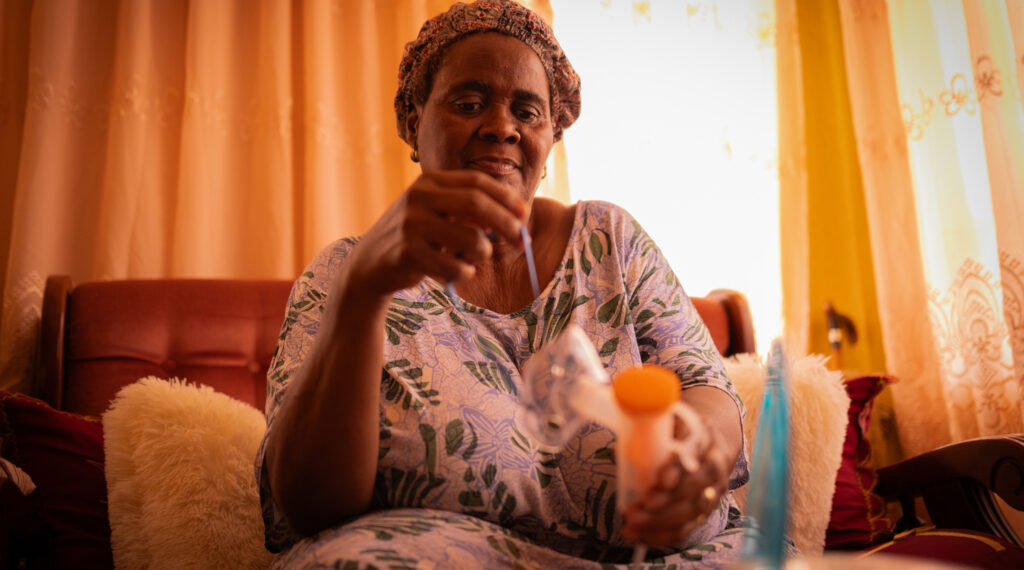Visualising climate justice: Representing the communities hit hardest by air pollution

Air pollution is the largest environmental threat to public health globally. But the impacts are unequal, with the most marginalised groups exposed to the dirtiest air. This important climate and social justice issue doesn’t get nearly enough attention from the media, public or politicians. Philanthropic foundations are uniquely placed to catalyse more equitable and authentic representations of the communities disproportionately affected by global challenges.
An invisible inequity issue that needs visibility
Over 8 million people die prematurely each year because of air pollution. It’s the second leading cause of deaths from non-communicable diseases after smoking. It also exacerbates climate change and hinders economic activity.
Air pollution is also a social and climate justice problem. Disadvantaged groups are most likely to live in polluted neighbourhoods and work in settings most exposed to air pollutants. The most marginalised experience the triple burden of poverty, environmental degradation, and ill health.
The richest nations are primarily responsible for the climate crisis. Yet more than 95% of premature deaths attributed to air pollution are in low- and middle-income countries. From South Africa to Indonesia, people on the lowest incomes are hit the hardest. In Europe, air pollution is consistently higher by one third in the poorest regions. So the people least responsible for emissions are the most exposed. They also tend to have less agency and power in political decision making.
Improving air quality is essential for addressing racial, gender and income inequalities. The voices of people most affected by air pollution need to be part of campaigns and policy debates for inclusive and effective action on air quality and climate change.
Storytelling challenges and constant content demands in a digital world
Despite the scale of this global crisis, air pollution is not given enough attention from philanthropies, governments, the media or the public. When the media does cover the topic, news articles are often accompanied by photos of impersonal (and often quite beautiful) polluted cityscapes or uninspiring sources of pollution. People are usually absent from these photos and the available images tend to come from global north countries, with a notable gap of images from Africa. There is a major lack of accessible and captivating images of air pollution and the communities most affected.
As communications practitioners, journalists and campaigners know, sourcing high-quality photos that ethically depict real people and complex problems is a constant challenge. And every piece of content needs an image. Commissioning photography is a costly and lengthy exercise for NGOs and civil society organisations. Media and voluntary organisations are often strapped for time and resort to using existing picture libraries or stock images to accompany their articles.
Researchers are making the case for more inclusive visual strategies to expose the injustices of disproportionate environmental impacts on low-income communities and people of colour. The global development and climate communities are moving toward more ethical and participatory practices. As Maria Teresa Salvati puts it, we need to “see through the eyes of those who are subject to injustices, which are the ones best placed to advocate for meaningful changes, but in order to do this, we need to feel connected to them.”
Philanthropies can help shift narratives
Philanthropic foundations should play a catalytic role in driving authentic representations of climate and social justice issues. More foundations are funding communications and awareness projects to bring attention to the inequitable impacts of air pollution.
Clean Air Fund collaborated with Climate Outreachto launch a new collection of air pollution photographs, free for non-profit, educational and editorial use. We commissioned the images in response to the shortage of accurate, striking and accessible photojournalism highlighting the impacts of air pollution alongside solutions to the problem.
Taken in Indonesia, Poland, South Africa and the UK, the 200+ photographs of air pollution and the communities affected by dirty air are available to browse and download on the Climate Visuals library. We hope these photos equip the clean air movement and wider climate community with compelling images to drive meaningful action.
Other philanthropies are beginning to see the cross-cutting benefits clean air initiatives can deliver for multiple sustainable development outcomes. Our research on philanthropic funding shows that most financing for clean air came from foundations focussed on climate, energy, environment, public health and social justice. 30% of the philanthropic funding for clean air between 2015 and 2022 went to communications and awareness projects. But despite this growing momentum, overall clean air funding makes up less than 0.1% of total philanthropic funding globally.
Clean air has the transformative potential to improve systemic health, climate and social inequity problems. Philanthropies need to step up and help shift political and public narratives to garner support for equitable clean air measures.
Authors

